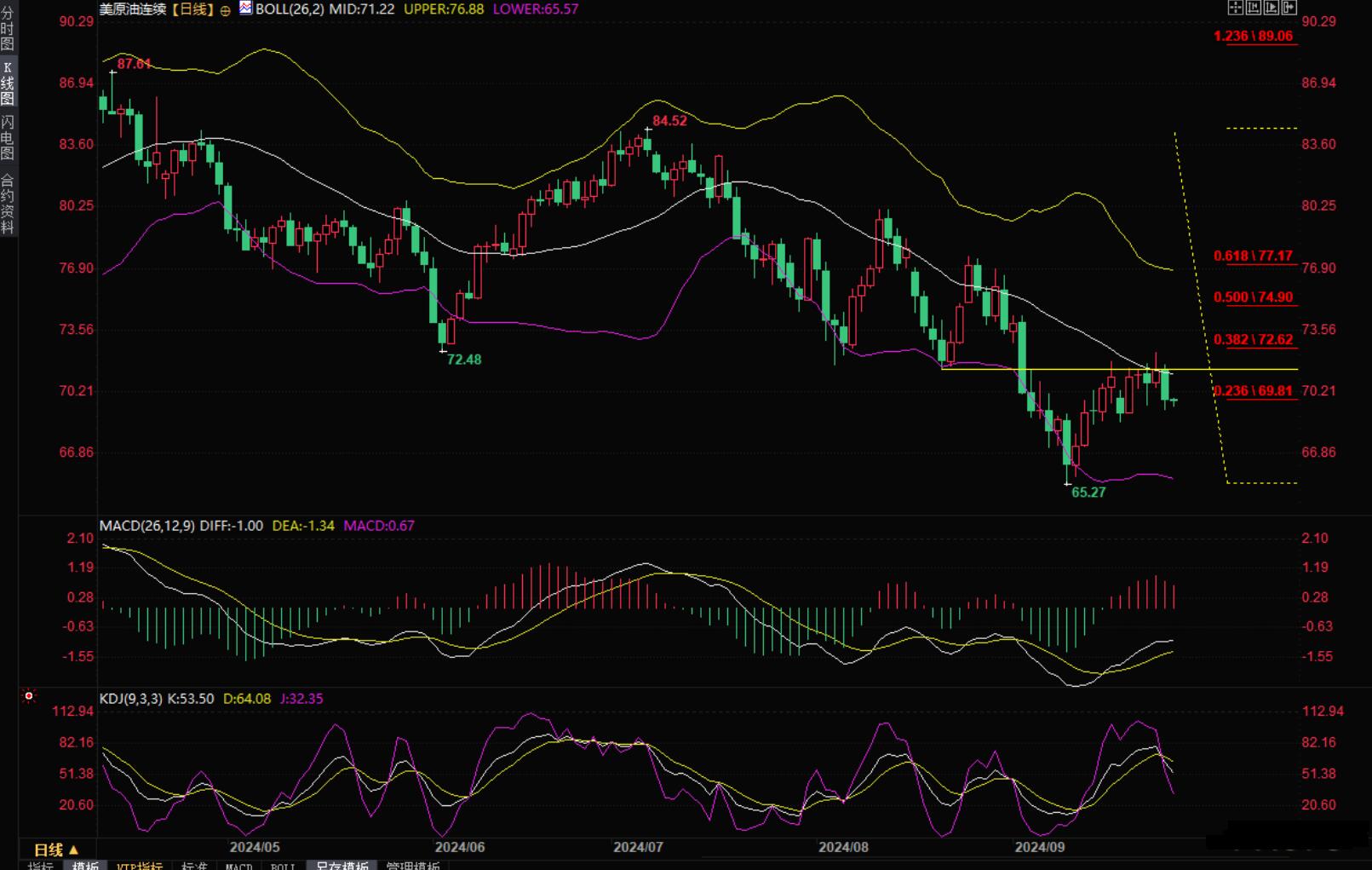Crude oil trading analysis: Libya's supply concerns ease, oil prices plummet by over 2%
On Thursday (September 26th), in the morning session of the Asian market, international oil prices fluctuated narrowly, with US crude oil currently trading around $69.73 per barrel, close to the lowest point in nearly a week. Oil prices plummeted more than 2% on Wednesday as market concerns over disruptions to Libyan supply eased, and the United States and France sought to finalize a temporary ceasefire plan between Israel and Hezbollah. Additionally, market concerns about demand continue to linger.
However, the decline in US crude oil inventories still provides some support for oil prices.
Brent crude oil futures fell $1.71, or 2.27%, on Wednesday, settling at $73.46 per barrel. US crude oil futures fell $1.87, or 2.61%, on Wednesday, settling at $69.69 per barrel.
Various factions in Libya have signed an agreement on the appointment process of the central bank governor, which is the first step in resolving the dispute over central bank control and oil revenue, which has hit Libya's oil production and exports.
Energy strategist Clay Seigle said, "The resolution of the Libyan central bank crisis will drive a significant recovery in oil supply, while production disruptions in the US Gulf of Mexico region are considered very temporary
The hurricane threatening the Gulf Coast of the United States has changed direction, turning towards Florida and moving away from oil and gas producing areas near Texas, Louisiana, and Mississippi.
Although the central banks of major Asian countries announced a series of monetary support measures on Tuesday, the largest since the pandemic, analysts warn that these countries need more fiscal support to boost economic activity.
Meanwhile, the US Energy Information Administration (EIA) reported that US crude oil inventories decreased by 4.5 million barrels to 413 million barrels in the week ending September 20th, with analysts expecting a decrease of 1.4 million barrels. Last week, gasoline and distillate inventories also decreased.
The conflict between Hezbollah, supported by Iran, and Israel is escalating, and earlier in the trading session, it also supported crude oil prices. The launch of cross-border rockets by both sides has increased concerns about the outbreak of a broader conflict. However, as the United States and France prepare to intervene in mediation, this concern has cooled down.
The US Deputy Envoy to the United Nations told the Security Council on Monday that the US is working to avoid a larger conflict between Israel and Lebanon.
The French Foreign Minister stated that they are working with the United States to promote a 21 day temporary ceasefire between Israel and Hezbollah for negotiations. The temporary ceasefire plan will be announced soon.
The British Foreign Secretary also stated that negotiations between Israel and Hezbollah must begin immediately and a ceasefire must be achieved.
Cyprus President Hristozulides said that the United States and France are trying to finalize a temporary agreement to stop hostilities between Israel and Hezbollah in Lebanon, in order to open broader diplomatic negotiations.
He said, "I don't think we can reach a broad agreement, we can only reach a temporary agreement to avoid further escalation of the situation. This is the current effort, especially the efforts of the United States and France
To avoid further escalation of the situation, so as to have time to find a permanent solution through diplomatic channels, "he said. He had phone conversations with Lebanese Prime Minister and French President Emmanuel Macron in New York, and with Israeli Prime Minister Netanyahu.
This trading day will release the changes in the number of initial jobless claims in the United States, the initial monthly rate of durable goods orders in August, and the final GDP value of the second quarter of the United States. Investors need to pay close attention to this. In addition, there will be speeches from multiple Federal Reserve officials on this trading day, and investors also need to pay attention to the geopolitical situation.
From a technical perspective, at the daily level, US crude oil failed to break through the resistance near the low point of 71.46 on August 21, and was also significantly suppressed by the Bollinger Bands. KDJ formed a dead cross again, and oil prices returned below all moving averages. We need to guard against the possibility of oil prices continuing the previous decline. Pay attention to the support near the low point of 68.58 on September 18 below. If we lose this support, it will increase the bearish signal for the future; The resistance of the middle track of the upper Bollinger Bands is currently around 71.22. If it breaks through this resistance strongly, it will increase the bullish signal for the future.

Continuous daily chart of US crude oil
Tips:This page came from Internet, which is not standing for FXCUE opinions of this website.
Statement:Contact us if the content violates the law or your rights
